Ways to Rehydrate Dehydrated Food
Three ways to rehydrate dehydrated food to use for dinner tonight or in hiking meals on the go! These easy steps will have you confident in your dehydrating for food storage skills!
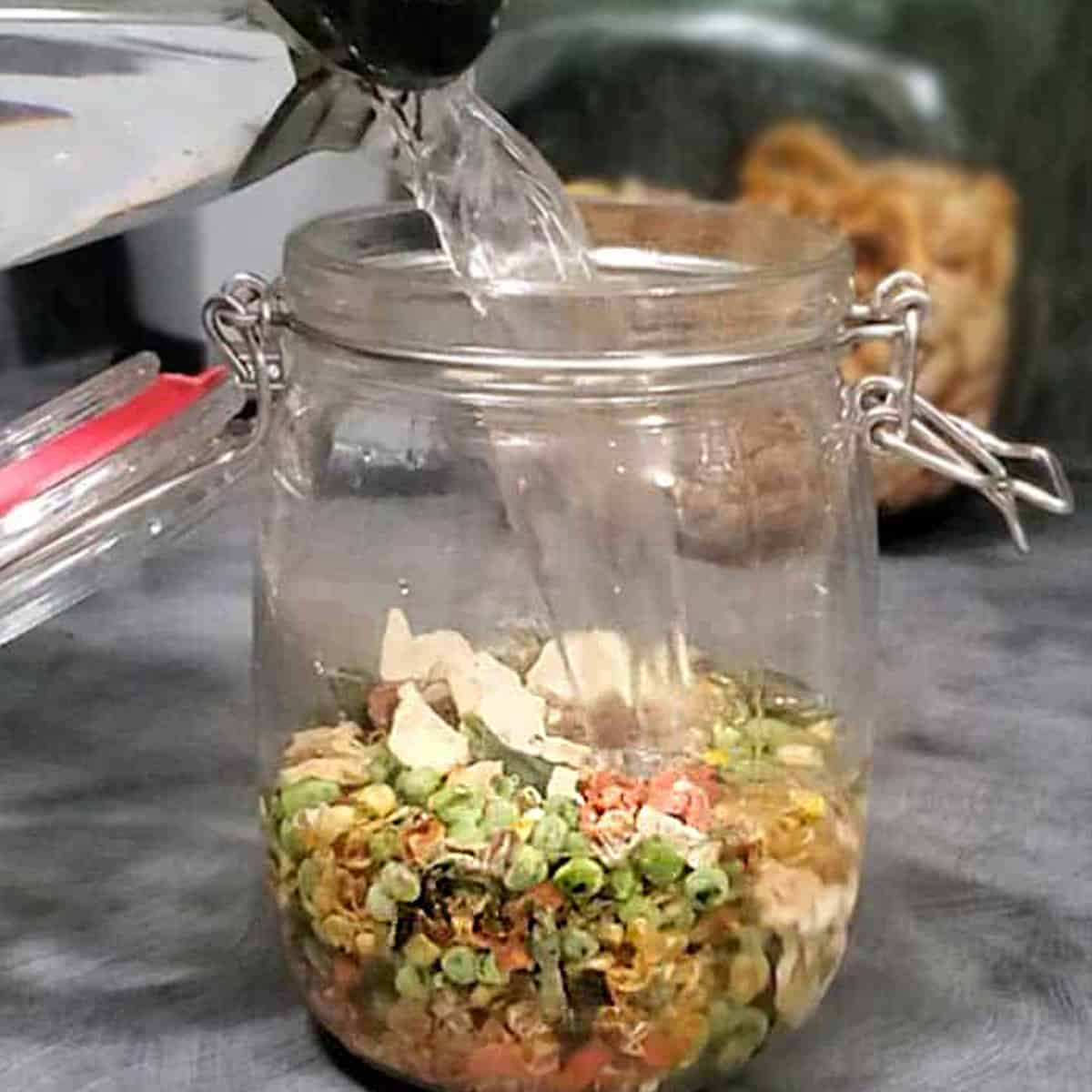
Instead of just sitting and staring at your dehydrated foods, you need to learn to use dried foods in cooking for your family.
Sometimes it may just be as a replacement for a fresh ingredient, and sometimes it may be to create whole meals from dried foods.
Following these basic steps will help you understand how rehydrated foods will work best in your dishes!
How to Rehydrated Dried Food
Boiling Water
- Boil water
- Pour over your dehydrated food
- All it to sit for 20-45 minutes
Less dense foods rehydrate more quickly than dense foods – so things like mushrooms need much more time than corn does.
This works for fruits as well, and you can use a fruit juice o rehydrate if you wish.
Overnight Soak
This is my favorite way of rehydrating, when I have all of my ducks in a row!
- Simply fill a container with the amount of dehydrated food you want to use in your meal.
- Fill the container with water. You need to do more than simply cover the food, give yourself another inch or two of water. Those food pieces will soak up the water, and you may end up with less than you need.
- The next day, use that food in your meal. You can use the leftover water as part of the liquid in preparing the food.
You can see how I did it with this meal: Cottage Pie with Dehydrated Vegetables.
Simmering
Simply putting your vegetables into a simmering soup or stew is the easiest means of rehydrating. You’re already using liquid that’s warm, it’s faster than an overnight soak, works just about the same as boiling, and doesn’t create more dishes for you to clean after.
Remember, You Still Need to Cook It
Dehydrated food is usually not cooked prior to dehydrating. You may have blanched a particular vegetable before drying, but it is not completely cooked.
Quick rehydrating doesn’t replace cooking time. It simply rehydrates the food – it still needs time to cook.
If you have fully cooked your food before dehydrating, with a root vegetable, etc., rehydrating time is fairly simple. But with most dehydrated foods, they still need that time to finish cooking.
This is the reason you might find that your vegetables are still tough in a soup if you just tossed them, in, gave them some time to rehydrate and tried to serve.
How to rehydrate meals
Hiking, backpacking, and camping meals have a different twist on rehydrating. Because those items may be full meals, you don’t want to rehydrate a serving of spaghetti as soup.
Water is precious on the trail, and you don’t want to have to carry in more than you need, or waste energy boiling more than you need. So it is important to know how much water you might need for any particular food/meal.
- Prepare your ingredients or meal normally. Most hiking meals are fully cooked before dried.
- Weigh a serving size
- Dry it per the instructions for that food
- Weight the final product
The difference in weight is the water. Knowing that you’ll need just a little more water for vaporization if boiling, up the water a little to prepare a boiled version of rehydrating.
You won’t need the extra water if you use an overnight soak or a thermos to rehydrate.
Frequently Asked Questions:
Enough to cover the food plus extra. You can always add more if you find that the food has absorbed all you’ve given it to start with. Any extra broth can be used in cooking rice or added to the meal you are making.
If you are making food specifically for hiking/camping/backpacking trips, always weigh your food before drying and then after. That difference is the amount of water you need to add to rehydrate your meal. Always have a little extra to adjust after.
Of course! Broth works wonderfully, and you can use that as the liquid in the dish you are about to make. Click here to learn how to make your own vegetable broth, how to can broth for preserving, and even how to dehydrate broth!
Volumetrically, it’s easy.
1 C of fresh fruit or vegetable equals 1/3 to 1/4 cup dried equals 1 tablespoon of powdered. It’s easy to adapt to any cooking recipe to use less or more depending on your taste.
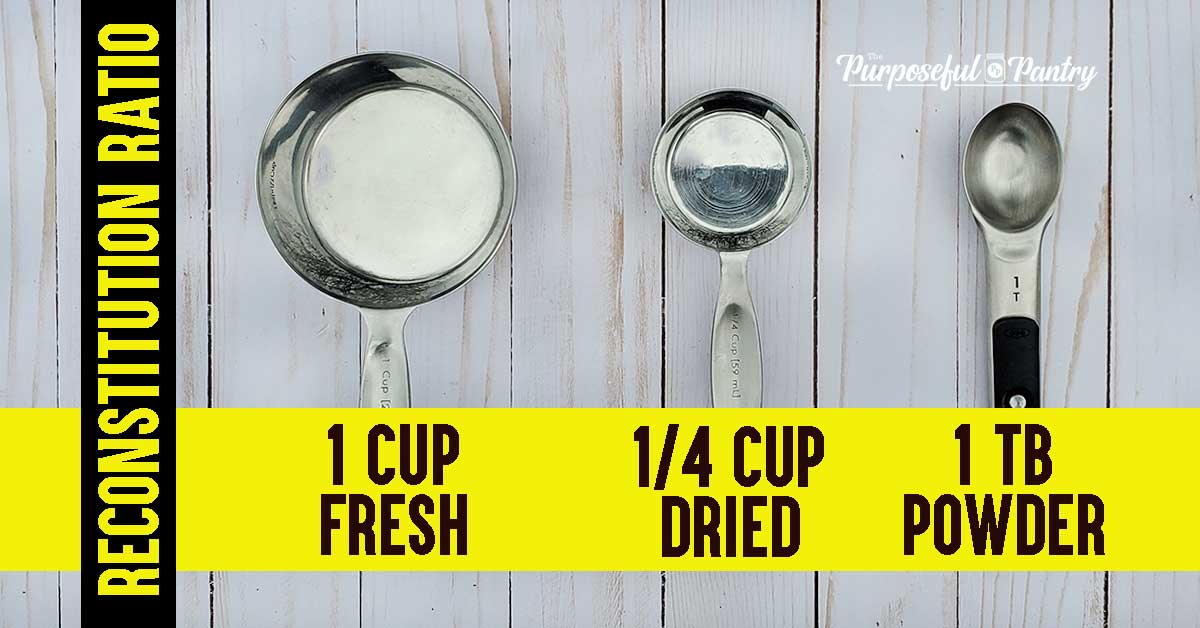
Why the variance in dried? The density and size of the foods that you cook makes all the difference. Larger pieces don’t compact down as much. You could go by weight, but thankfully. cooking isn’t that fussy!
It’s a good thing that cooking meals doesn’t have to be exact! Neither does the water content when you are simply dehydrating
Even when you are using powders, you only need to add enough water to get the consistency that you want when creating a paste. While some things like pumpkin might need to be more exact when making a pie, most of the time, a consistency that you prefer is all you need.
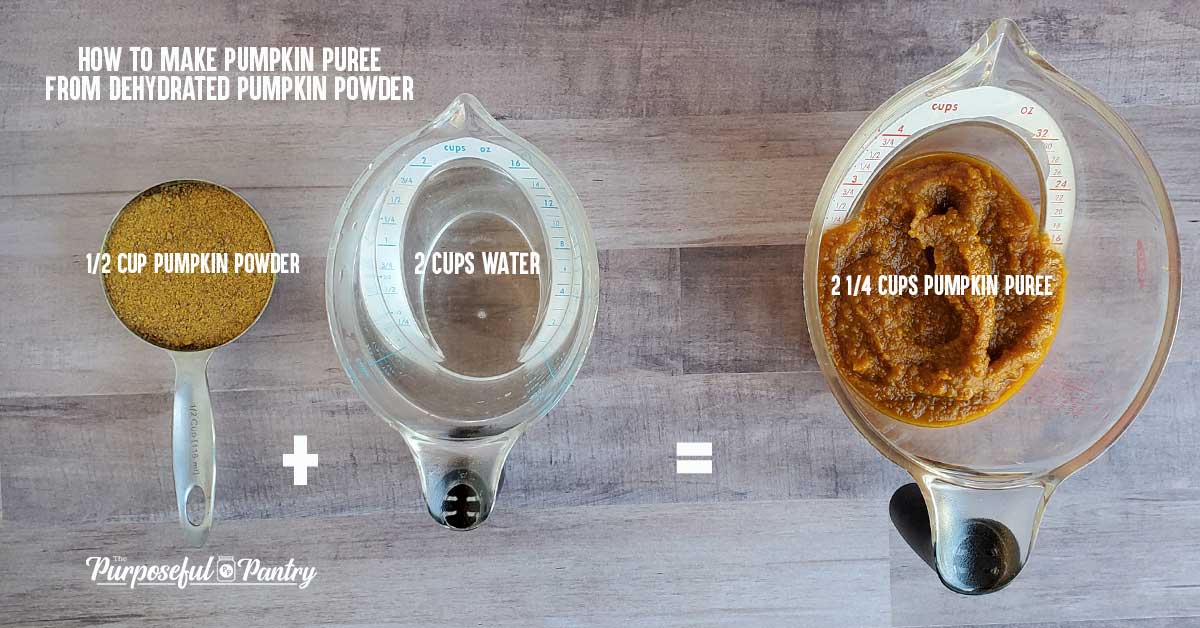
If you need a visual, almost all of my dehydrating tutorials give you a specific ratio of fresh to dry.
Of course, here is a free chart that gets you to many foods. While some of these are freeze-dried, and the times can be a little longer for dehydrated soaking, it will give you an idea.
But I promise, in no time at all, you won’t even need that.
If you can’t see the video, please click on the red arrow. This is part of the DRYCEMBER series I did on Youtube that speaks specifically about reconstituting dried foods.
Learn more dehydrating basics here.
How To Use Dehydrated Foods
Now that you’ve learned all the ways to dehydrate, here are some recipes you can try your food in!


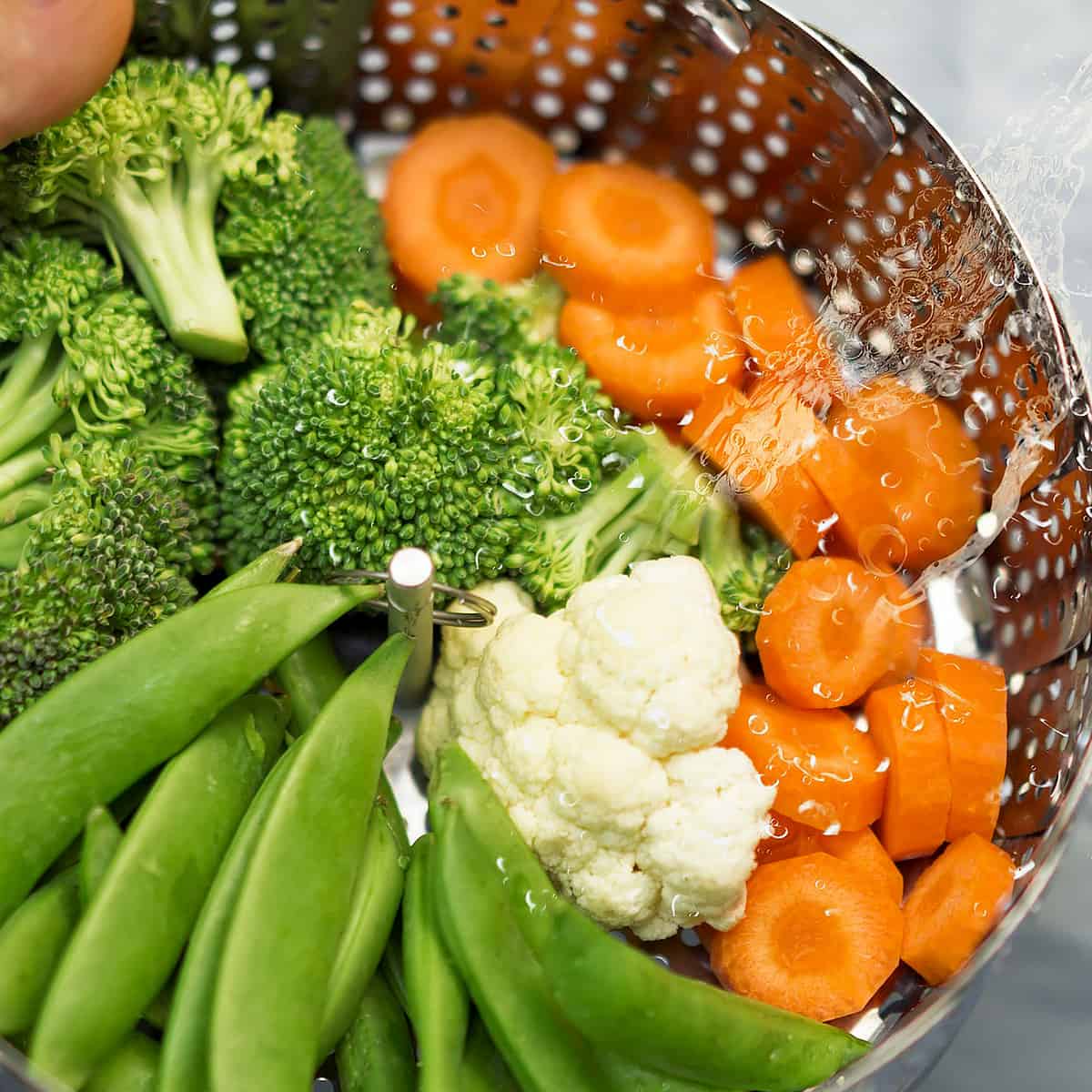
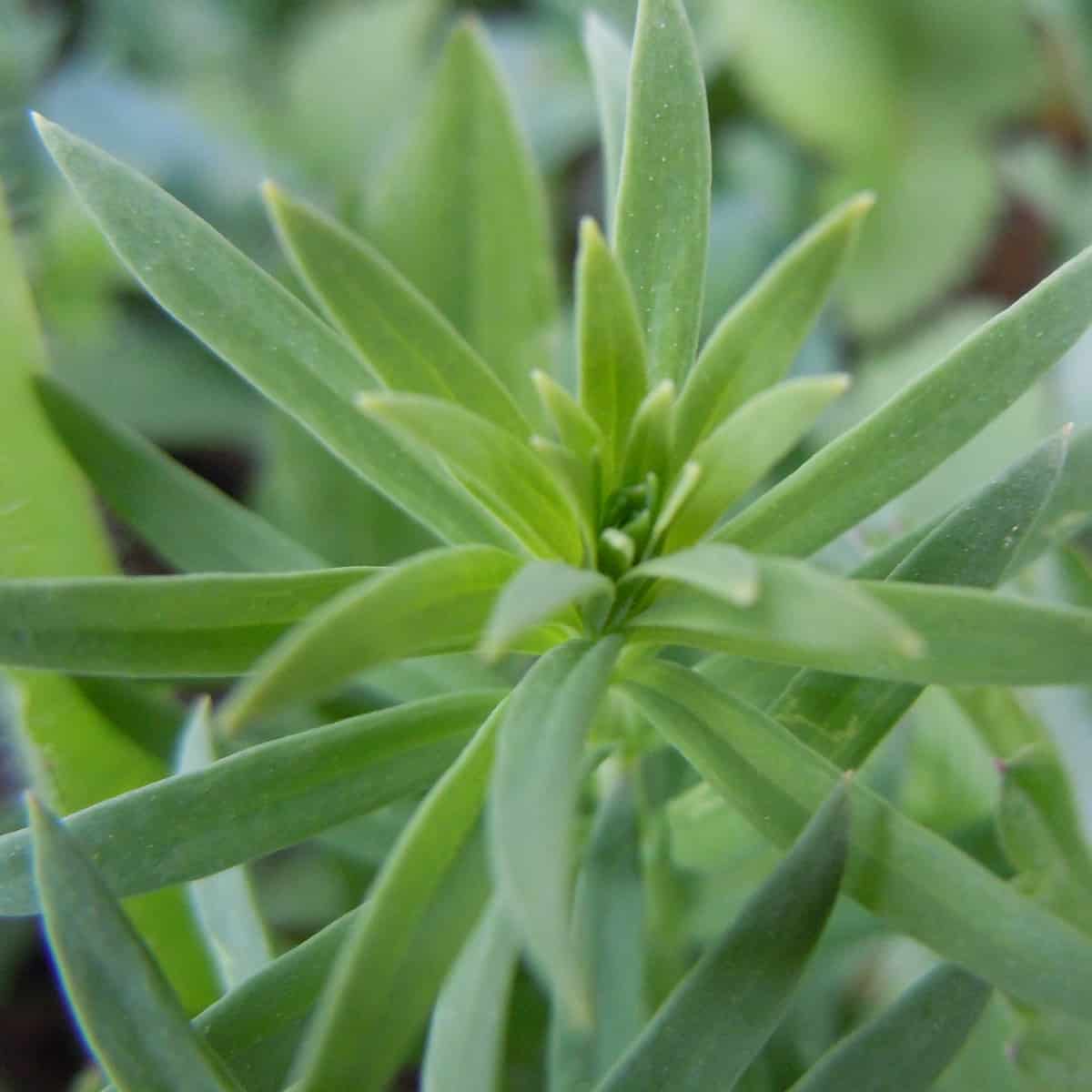
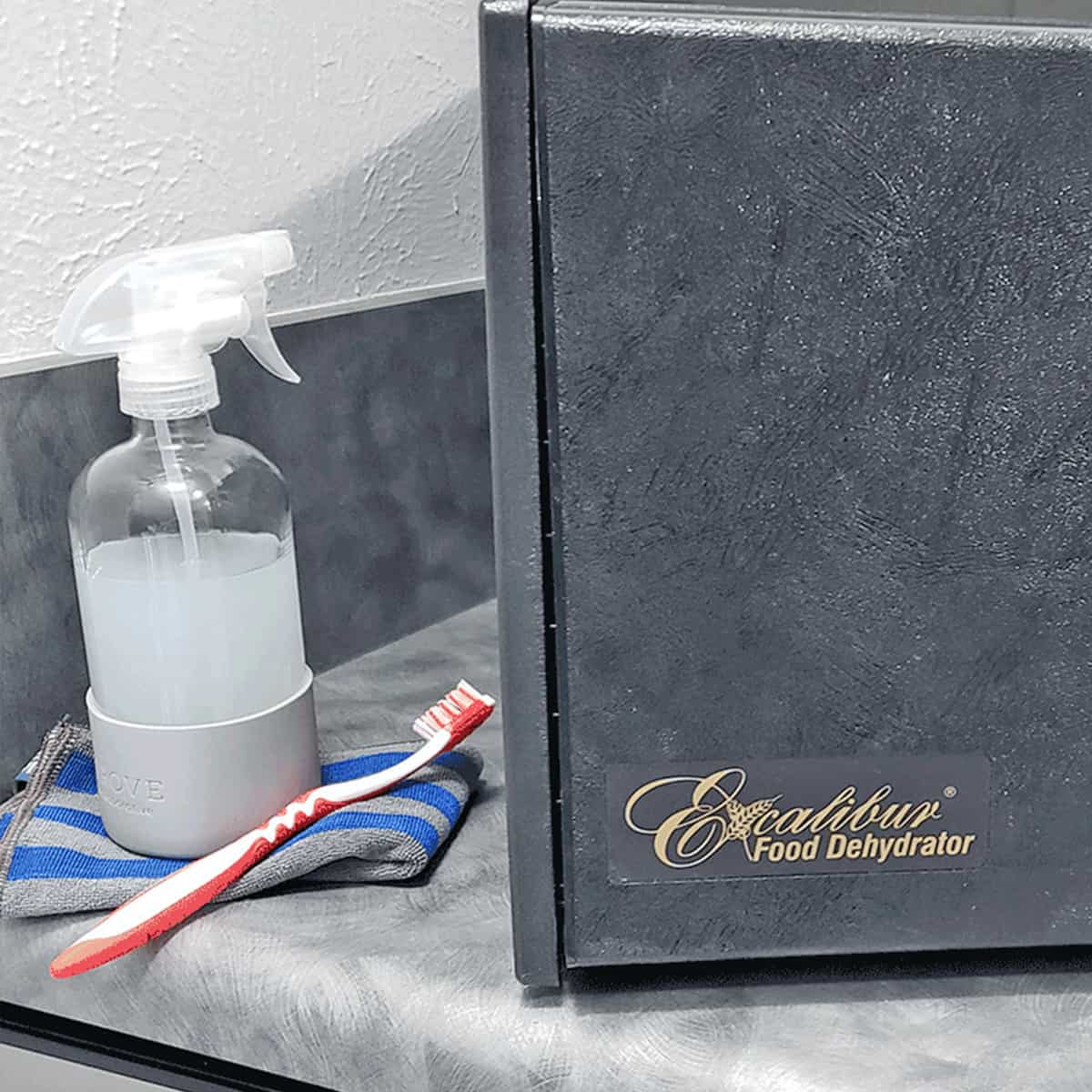
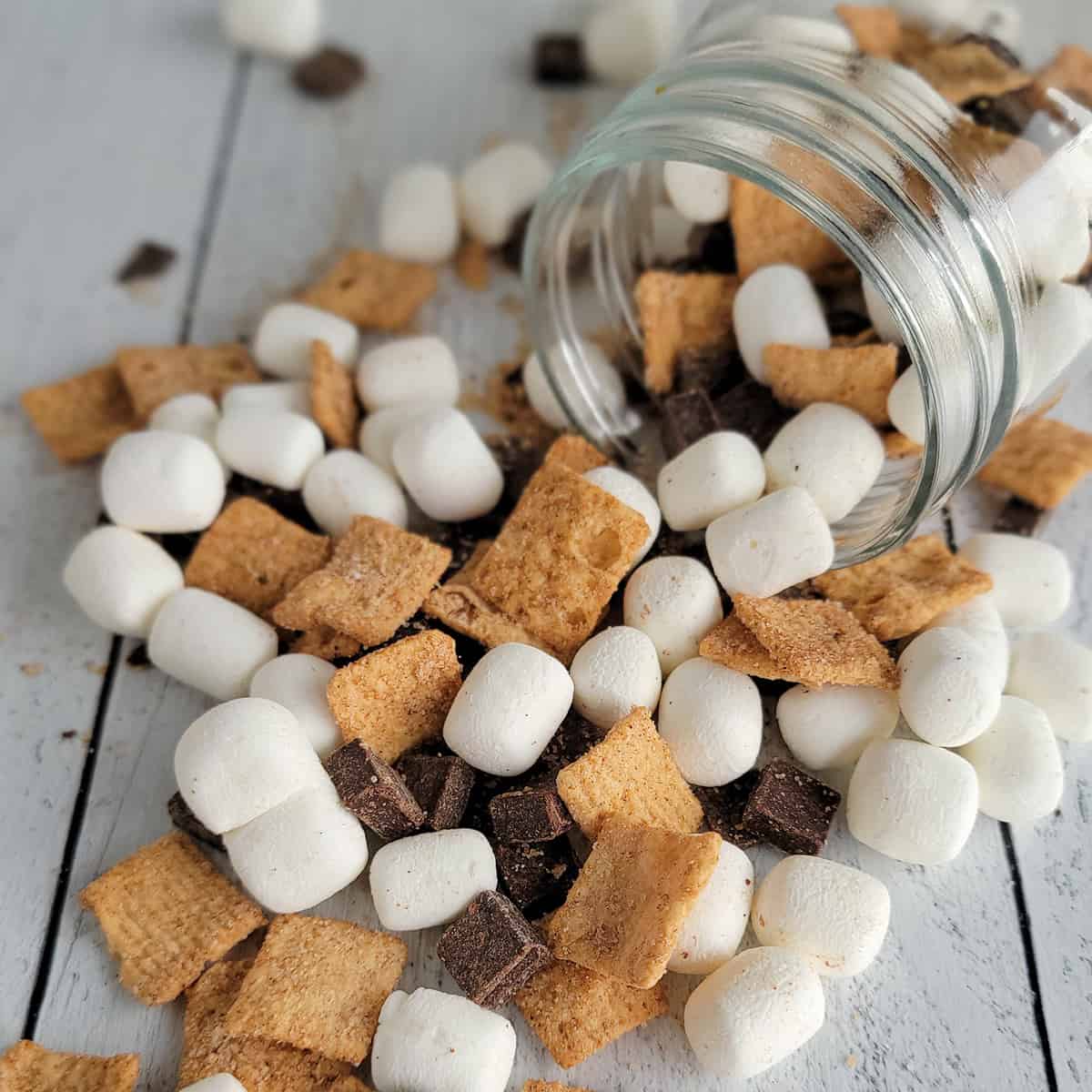
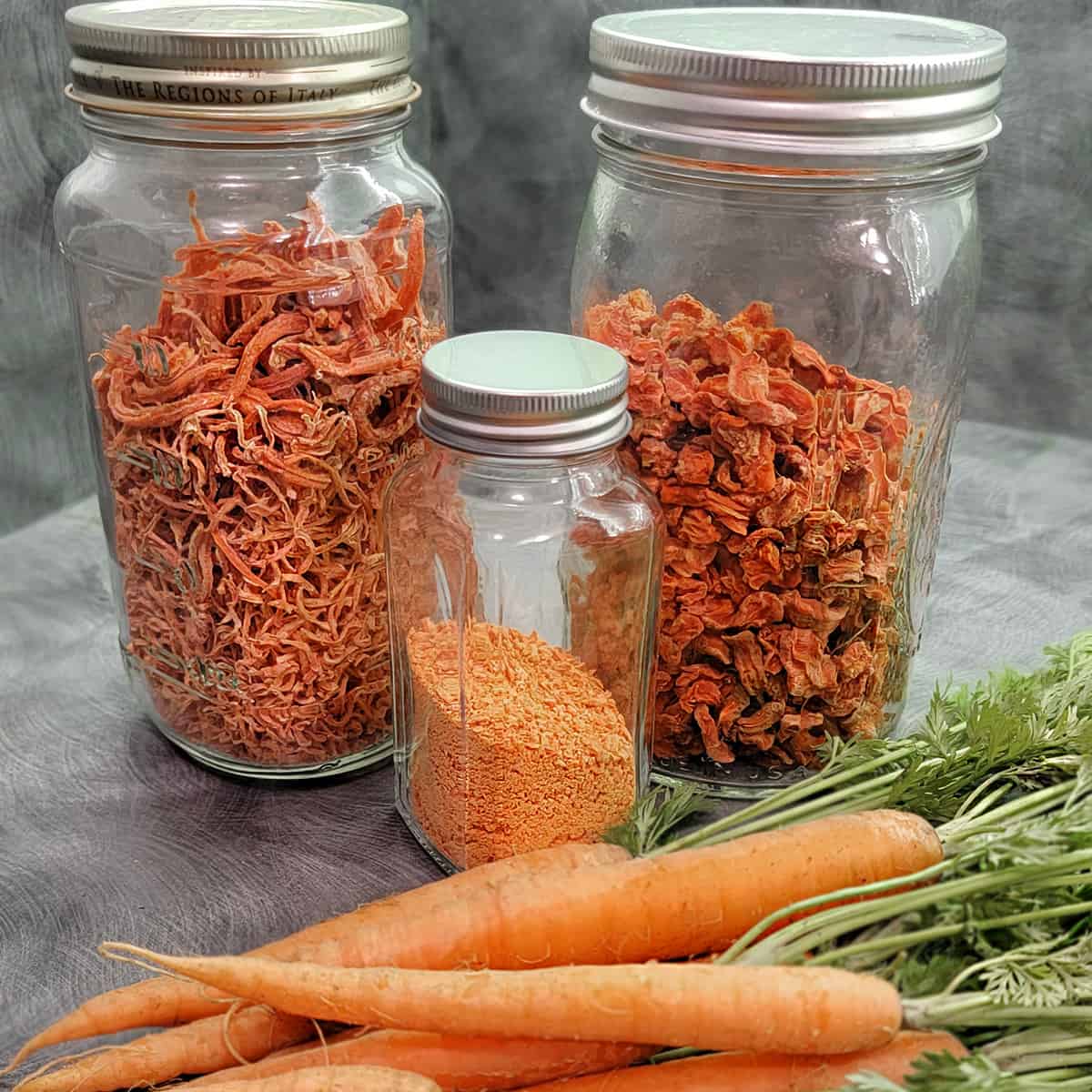
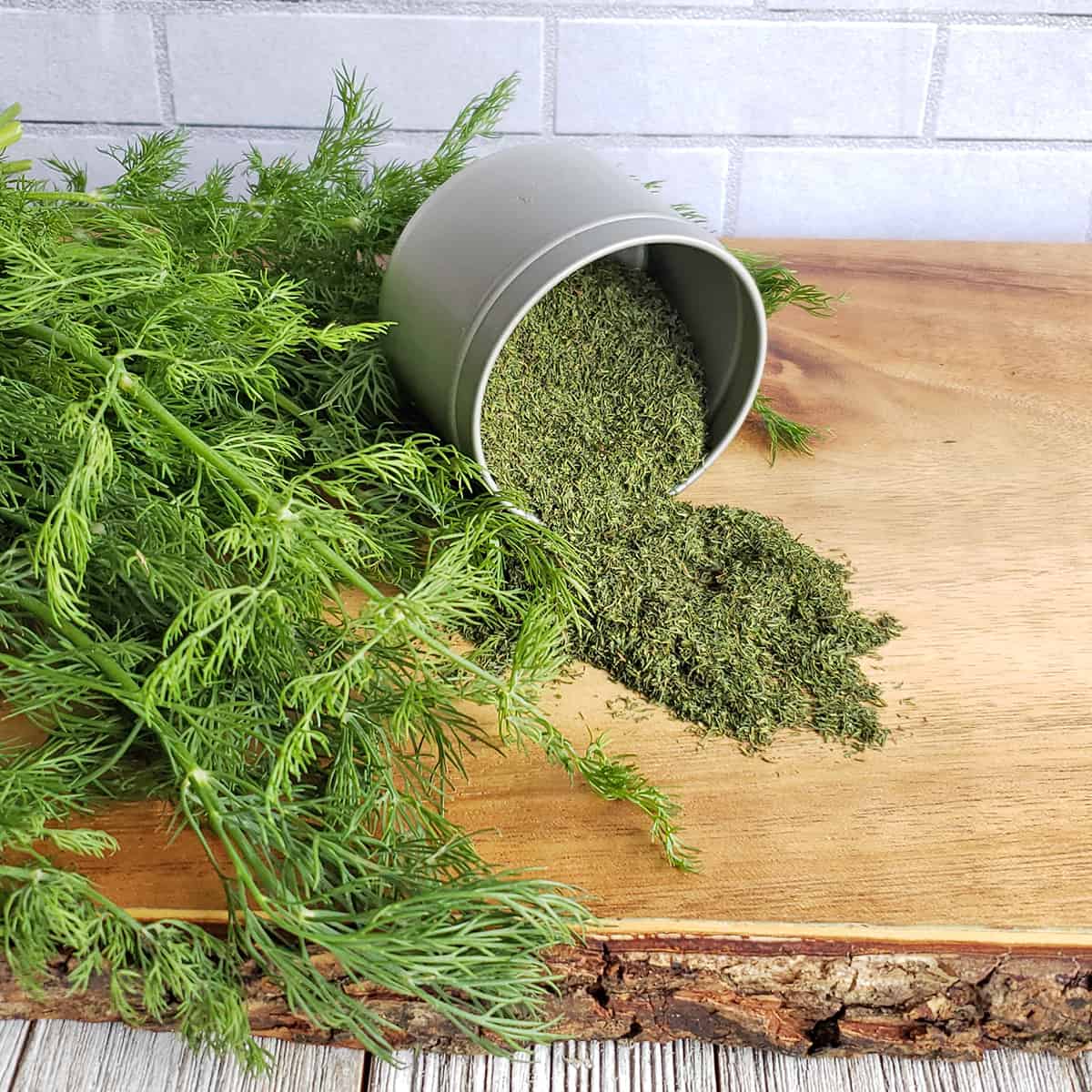
Can I eat rehydrate leftover the following day on a hike… Without it being in a fridge
yes
Thank you Darcy, the visual plus the clearly written words make this an easy way to remember how to rehydrate my dehydrated food!
Awesome, I’m glad!